The views expressed in our content reflect individual perspectives and do not represent the authoritative views of the Baha'i Faith.
One of the famed Lakota Baha’i Patricia Locke’s favorite passages from the writings of Baha’u’llah is this beautiful and mystical universalism:
Unto the cities of all nations He hath sent His Messengers, Whom He hath commissioned to announce unto men tidings of the Paradise of His good pleasure, and to draw them nigh unto the Haven of abiding security, the Seat of eternal holiness and transcendent glory.
Here, Baha’u’llah refers to the Creator as sending divine messengers to every culture and civilization. So a fundamental premise of this “Indigenous Messengers of God” series is that “all nations” includes all Indigenous “First Nations,” at least in principle.
In this series of essays, we have identified several messengers of God to First Nations – among them the Cree messenger, Wesakechak (wîsahkêcâhk), well known as a Cree spiritual teacher and lawgiver. Yet Wesakechak seems far better known today as a “trickster” — an interesting and, for some non-Indigenous readers, a perplexing and challenging aspect of Indigenous tradition.
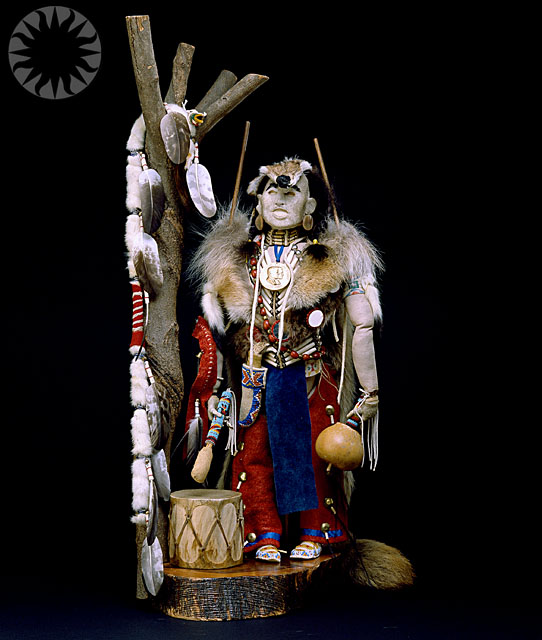
RELATED: How the Australian Aboriginal Divine Messengers Appeared
So Kevin, I’ve just read the Cree scholar and writer Sylvia McAdam’s book, Nationhood Interrupted: Revitalizing nêhiyaw Legal Systems. On the back cover this statement includes “non-Indigenous people,” beyond the immediate, intended audience of the Cree tribal members:
McAdam, a co-founder of the international movement Idle No More, shares nêhiyaw laws so that future generations, both nêhiyaw [Cree] and non-Indigenous people, may understand and live by them to revitalize Indigenous nationhood.
Why do you think “non-Indigenous people” are a part of Sylvia McAdam’s intended audience? “Nationhood is primarily about land, language, and culture,” McAdams wrote, explaining that “Gaining an awareness of Indigenous laws will provide non-Indigenous people insight into the thoughts, worldview, and nationhood of Indigenous people before and during the numbered Treaty-making process.”
A: Well, the Baha’i teachings clearly say that we are all global citizens now – that we all belong in “the Haven of abiding security.” That means we need to know about and understand the spiritual traditions of others, especially when they seem foreign or unusual. That kind of understanding will reduce the barriers to human unity.
Q: Both of Wesakechak’s roles as lawgiver and trickster are mentioned by Sylvia McAdam, who writes that “wîsahkêcâhk is believed to be part human and part spirit, big brother to humans and to creation. He has been referred to as a “trickster,” a spiritual keeper, and is gifted with powers to heal and answer prayers. She credits the following statement to her father, Francis McAdam (Saysewahum):
… wîsahkêcâhk went to okimâwaskwaciy (Chief Bear Hill in the Cypress Hills area — minátahkâwa), at the top of, he sang four songs. As he sang the four songs to the four directions, the Creator gave him the laws to bring people to follow for all time. …
When wîsahkêcâhk went to went to okimâwaskwaciy (Chief Bear Hill in the Cypress Hills area — minátahkâwa), and the Creator gave him directions, he was told to bring the laws to the people, but specifically it was the women who became the law keepers.
The abundance of popular trickster stories about Wesakechak and other Indigenous messengers raises some difficulties for many non-Indigenous readers, who may find it difficult to reconcile trickster narratives with a figure like Wesakechak who, at the same time, is a deeply venerated and respected source of wisdom and spiritual enlightenment and guidance for the Cree people.
In the preface to her book, Sylvia McAdam indicates that the “spiritual laws” cannot be written down:
When I sought out permission from my parents, Francis and Juliette McAdam (Saysewahum), recognized knowledgeable Elders of our nation, they clearly stated that only the physical laws could be written down and not the spiritual laws. Which posed a challenge, at best; the physical and spiritual are intimately intertwined, but not impossible to speak about as separately as possible. You will read “glimpses” of spirituality and hints of meanings far more than I could write about.
Sylvia McAdam talks about this issue in her YouTube video: “Wesakechak.”
So Kevin, two questions: (1) Do you agree that this may account for why Wesakechak is far better known as a trickster rather than a spiritual lawgiver?; and (2) As a trickster, does Wesakechak represent and symbolize humanity at large? My reason by posing the second question in this way is based on the following Baha’i teaching from Abdul-Baha:
Every divine utterance that takes the form of a rebuke, though it be outwardly addressed to the Prophets of God, is in reality directed to Their followers. The wisdom of this is naught but unalloyed mercy, that the people might not be dismayed, disheartened, or burdened by such reproaches and rebukes. These words are therefore outwardly addressed to the Prophets, but, even so, they are inwardly intended for the followers and not for the Messenger.
Here, do you think that Abdul-Baha’s principle here can be extended to Indigenous trickster figures who are also Indigenous messengers of God, in the form of edifying stories and narratives from which Indigenous people, primarily children and youth, can better learn Indigenous values, ethical principles and moral precepts?
A: Indeed the trickster figure is something of an anomaly for most non-Indigenous readers. Although the trickster is prominent in folklore narratives around the world, in North America it is particularly well developed and serves as a major cultural force for teaching correct behavior through clearly and episodically detailing the consequences of failing to rein in and control one’s egotistical material nature.
RELATED: Encouraging Indigenous Land and Spiritual Acknowledgements
Q: Kevin, the respected Indigenous legal scholar John Borrows – the Canada Research Chair in Indigenous Law at the University of Victoria, of the Chippewa of the Nawash First Nation – explained this question in an article he wrote about trickster figures for the McGill Law Journal:
The Trickster offers insights through encounters that are simultaneously altruistic and self-interested. … “The Trickster, The Teacher is a paradox: Christ-like in a way. Except that from our Teacher, we learn through the Teacher’s mistakes as well as the Teacher’s virtues.” In his adventures, Nanabush roams from place to place and fulfils his goals by using ostensibly contradictory behaviours such as charm and cunning, honesty and deception, kindness and mean tricks. The Trickster also displays transformative power as he takes on new personae in the manipulation of these behaviours and in the achievement of his objectives. Lessons are learned as the Trickster engages in actions which in some particulars are representative of the listener’s behaviour while in others they are not. The Trickster encourages an awakening of understanding because listeners are compelled to confront and reconcile the notion that their ideas may be partial and their viewpoints limited. Nanabush can kindle these understandings because his actions take place in a perplexing realm that partially escapes the structures of society and the cultural order of things.
What do you think of this typology, or paradigm? How useful is it for understanding Indigenous sacred narratives? And can you find any parallels with elements in the Baha’i writings?
A: The Lakota oral tradition, called ohúŋkakaŋ wóyakapi (“ancient/fantastic/mythical narratives”) is full of these characters. These are winter stories that feature the famous trickster, Iktomi, as well as Iya, the monster devourer, as well Wakaŋka, the ancient woman, Ite, the beautiful woman, and also Blood Clot Boy, Stone Boy, and a kaleidoscope of other characters that fit the four-fold typology mentioned above.
These beings are archetypal and have their counterparts around the globe. They portray an emergence from the distant past, and are even now being rediscovered by contemporary society. Starting with the appearance of White Buffalo Calf Woman – the divine law giver, society-builder and civilization-founder – they all take on heightened meaning in the context of her ethical teachings.
In the Baha’i writings, the divine messengers have multiple functions – prophets, lawgivers, moral and spiritual role models, revealers of God’s eternal wisdom, and many more. In the same way, the trickster figures in Indigenous traditions serve to guide us toward better and more enlightened lives.
You May Also Like
Comments




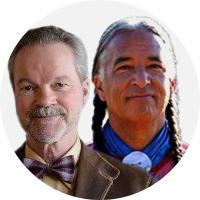



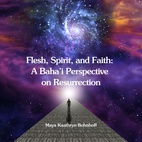

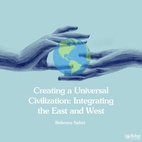

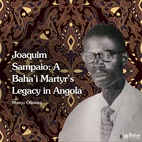
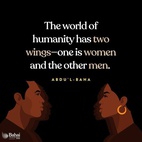
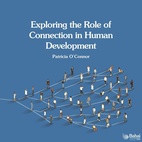
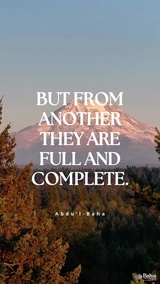

The letter from the UHJ to all NSAs in January this year mentions the local development of branch courses, and I would imagine that would be quite relevant to discourses related to the eternal Covenant in every nation.